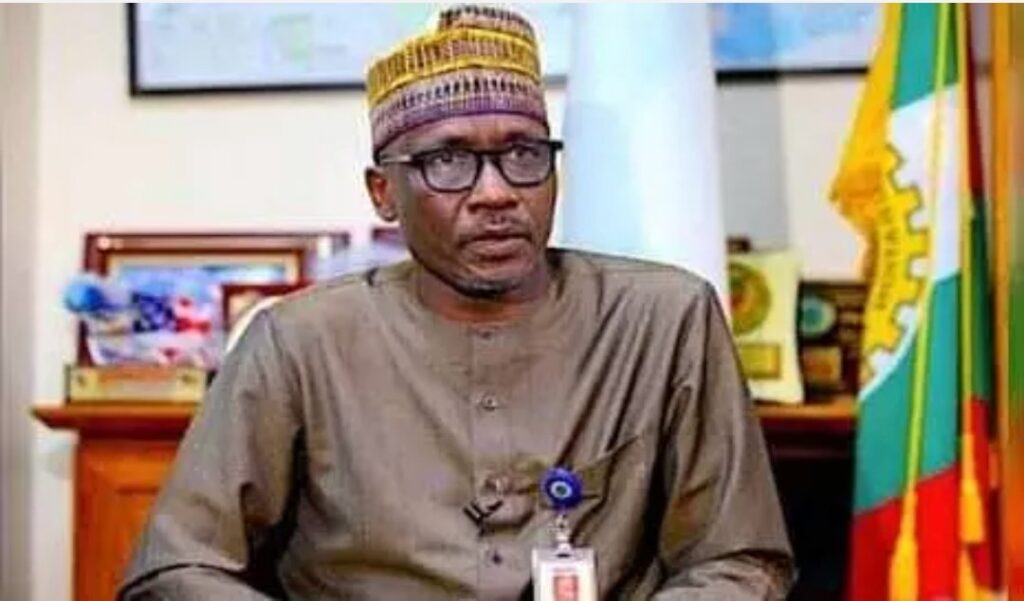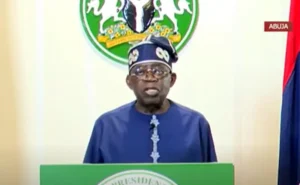Who Saves Benin-Ogba Zoo and Nature Park from NPDC’s Violations?

The protesters roasting cow at the entrance gate of NPDC

For the past eight years, there had been more stealthy threats to the Benin-Ogba Zoo and Nature Park (BENZOPA).
This is worsened by the seemingly nonchalance to addressing it by the Edo State Government, who holds it as a trustee for the Edo public. Government’s failure to act and solve the threats seems to encourage the ceaseless violations and corporate neglect of the lowland rainforest enclave, by the violators.
In today’s world, where the Climate Change scourge prevalently distresses all and corporate bodies are committed to supporting humanity to roll back the blight, in order to save mankind, it is disheartening and appalling that there exists a Nigeria’s National Petroleum Development Company (NPDC) Ltd., that tends to display a deliberate reversal policy to dishonour very simple corporate social responsibility (CSR) and environmental sustainability standards, upon which NPDC was supposedly established as a sub-national corporation.

NPDC, a subsidiary company of the Nigeria National Petroleum Corporation (NNPC), had established on the once pristine rainforest land of BENZOPA, a luxurious and sprawling edifice, which serves as its national headquarters.
The NPDC complex, located opposite BENZOPA, exposes the nature park and its unique diverse biological and nature forms to the manacles of direct sunlight and other environmental hazards. In other words, that BENZOPA is thus at the undue mercies of NPDC.

And discerning minds will not stop asking what NPDC had done with its Environmental Impact Assessment (EIA) principle, which set up NPDC as a public-oriented body and BENZOPA its ‘greening landlord’ and CSR primary recipient?
My investigation to the same NPDC headquarters, Benin City, was frustrating. It could show a lackadaisical NPDC. Getting official information from the company about BENZOPA is like squeezing water from the rock. But, some concerned and anonymous sources within the national company had condemned NPDC on its prolonged denials of BENZOPA and what it stands for.

According to the sources, series of letters had been written directly to NPDC and its parent organization NNPC, to no avail nor did lived up to the obligations demanded from it..
On 23rd October, 2013, when the whooping N20 billion complex was still being constructed, BENZOPA’s Management wrote to the NNPC Group General Manager through the then Project Manager of the NPDC Headquarters, the letter, signed by Mr. Andy Osa Ehanire, BENZOPA’s Director and Chief Executive Officer, politely sought for the corporation’s involvement in some key areas of the park and its nature protection.

It called for the recognition of the environmental status of the global conservation enclave, from which the gigantic NPDC’s land was carved out. Until now, NNPC and its subsidiary NPDC were silent on the veracity of the mandatory procurement of Environmental Impact Assessment (EIA) feasibility, for the gigantic project.
The letter, thereby, called on both to unveil the EIA plan, pronto, or conduct one that should duly involve all the stakeholders.

Ruefully, the letter reminded all that such E.I.A. studies and synergy, if carried out, with NNPC/NPDC and BENZOPA, would have reenacted the similarity of the nexus between the Nigerian Conservation Foundation (NCF) and Chevron Nigeria Limited.
This was a reference to the good corporate example of Chevron to nature conservation, as the multinational company had built the famous Lekki Conservation and supports the conservation activities of NCF.
In its momentous inception as a frontline Nigeria’s zoo and nature park (a protected area) in 1971 by the defunct Mid-West State government, with the dynamic Lt. Colonel Samuel Osaigbovo Ogbemudia, as a military governor, BENZOPA’s original acres of 750 and other extended land, had increasingly shrank or grabbed by poachers and grabbers. But the state government had failed confirm or categorize what is left of its size.

Although the Obaseki’s government can’t be wholly blamed for the dissipation of the enclave, since the problem had protracted, it cannot all together be exonerate from a vicarious responsibility, as it had been worst under its official watch.
No thanks to the internecine land grab by the adjoining local communities, land speculators and greedy house owners, some of who are implicated as big-time politicians.
Of course, that also calls for the nagging question; “Whatever happened to the public exposures and accompanying court case against some trespassers or grabbers of the park’s land, which the Mr. Obaseki vowed to achieve as he came to power?
But, who will save a BENZOPA’s masterpiece from a covetous political class, advancing neighbouring communities and big corporate players that are disposed to eating the cake and eager to have it back?

Mele Kyari, NNP MD
BENZOPA, in the conservationists’ and world view, is the last remnant of the rarest and rich Guinea Lowland Rainforest which is situated within city centre, for which BENZOPA is perhaps one of the last in Africa.
More so, that it is an appendage of the Niger Delta wetland, the second world largest and one of the highest in Biodiversity composition.
In the rain-drenched month of October, 1996, BENZOPA had experienced a global media spotlight when it was discovered as a destination/transition point for ringed migratory Birds, from the Finish Museum of Natural History, which also included Taraba, the north-east fringe state of Nigeria..

The ubiquitous British Broadcasting Service (BBC), in a spectacular widespread documentary, entitled ‘The Amazing Flying Visitors Without Visas’, was the needed fillip that attracted a flurry of research activities by Ornithologists (Bird experts) eco-touristic visitation to Taraba and BENZOPA. After this worldwide newsbreak, the ‘Important Birdlife Area’ of Weppa, Agenebode, Edo State, in the vicinity of the Weppa Farms and BENZOPA, had also been discovered as a host to more of the ringed migratory Birds such as the Ospreys, Barns Swallow, White Stork, Black Kite and others from the Hiddensee Bird Ringing Centre, Gustrow, Germany.

Andrew Dunn, a British born conservationist, who in 1996 visited BENZOPA, was dumbfounded by the roaring of motor saws from within the park’s designated land. Obviously, illegal loggers were carrying out, within a supposedly ‘protected area’, ‘Pleating’, a forestry lingo or term for sawing timber or logs with plain motor saws, instead of moving them to the sawmills.
Dunn, who earlier hailed the old-growth trees of BENZOPA, confessed that it was his first physical contact with large tropical rainforest trees (excepting the ones he had sighted in some rare motion and still pictures).
Saddened that the same precious trees were willfully destroyed by the devil motor saws, Dunn might have been moved to work for conservation in Nigeria, with his Wildlife Conservation Society (WCS).
Mr. Ako Amadi, then Technical Director of the Nigerian Conservation Foundation (NCF) and this writer, was Dunn’s guides during the visit.

Edo State government should live up to its responsibility as a trustee of the nature park, by addressing immediately, the problems that beset it, such as valuating its physical and ecological assets and in order to determine its remaining land area, which must be strictly protected.
It should also constantly de-silt the Ogba River and the effluences that flow freely into and through it. The expired floras should be regrown, while the old-growths of trees and lianas are strictly protected, with adequate landscaping of its turfs.
Needed to be proper fencing is the remaining designate land, whose terms of an industrial arbitration must be respected.
BENZOPA, the nature’s masterpiece a haven for conservation education and awareness, research, and eco-tourism visits must be protected for the cross generation of picnickers, which include the children and workers of NPDC.
And Edo State government has no option, but to prevail on NNPC and NPDC to live up to their responsibilities on BENZOPA.
After all, Petrobras, the Brazilian national petroleum company, NNPC’s counterpart, had always shown the right way to go, with its huge support and investment in nature conservation activities for the Brazilian people and posterity.








